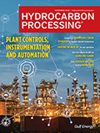Modular construction: Always considered, now COVID-necessary
The COVID-19 pandemic created a sequence of changes across all industries, and the chemical sector has not been immune to the impact of this global health crisis.
IP: 10.3.138.59
This is a preview of our premium content. Thank you for your interest—please
log in or
subscribe to read the full article.
The Author
Villegas, M. - Koch Modular Process Systems, Paramus, New Jersey
Mauricio Villegas is the Manager of Business Development at Koch Modular Process Systems. He has more than 25 yr of experience in the engineering and construction industry, delivering projects across industries ranging from small brownfield projects to greenfield mega-projects. Prior to joining Koch Modular Process Systems, he held various management roles at WorleyParsons, Technip, IHI E&C and Arcadis. Mr. Villegas earned a BS degree in business administration and management from Northeastern University in Boston, Massachusetts.
From the Archive







Comments